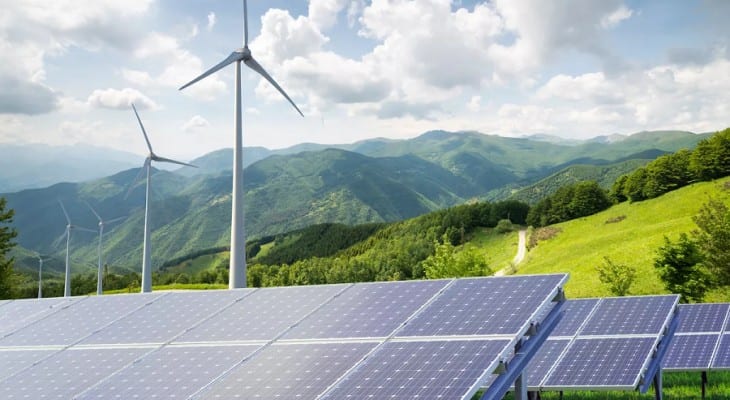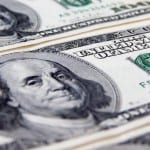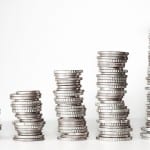High Dividend Stocks: Brookfield Renewable Partners (NYSE:BEP)
By: Ned Piplovic,

Even with a share price growth of nearly 40% since the beginning of 2019, Brookfield Renewable Partners (NYSE:BEP) still delivered a dividend yield to place the company’s performance among high dividend stocks.
The sharp share price increase reduced the company’s dividend yield over the past six months. For an equity with a mediocre dividend yield, such a decline would make the new yield not worth considering. However, Brookfield Renewable Partners’ yield fell from an impressive 8.4% at the end of last year to a 6% yield that is still considerable and significantly higher than most other equities with positive total returns.
Some of the high dividend stocks might have higher dividend yields. However, that high yield might come at the expense of the share price. The dividend yield is a ratio of total annualized dividend distributions and the equity’s current share price. Therefore, a sharp drop of the share price in the denominator of that ratio will drive the overall yield higher. However, since the magnitude of share price fluctuations can exceed dividend growth rates multi-fold, even a sharply rising dividend will not prevent overall losses on shareholders’ investment from steeply declining share prices.
However, a temporary share price decline can be an opportunity for buying shares at discounted prices and taking advantage of the recovery to book capital gains. This is exactly what happened with Brookfield Renewable Partners over the trailing 12 months. A double-digit-percentage price pullback increased the yield that the recovery brought down. However, even the reduced yield is still higher than Brookfield’s five-year average, which keeps Brookfield among the high dividend stocks even after its share price appreciation. In addition to High dividend yields, high dividend stocks also offer streaks of consecutive annual dividend hikes and positive total returns on shareholders’ investment.
Brookfield Renewable Partners (NYSE:BEP)
Headquartered in Hamilton, Bermuda, and founded in 1999, Brookfield Renewable Partners L.P. owns a portfolio of renewable power generating facilities primarily in North America, Colombia, Brazil, Europe, India and China. Situated on 82 river systems, Brookfield’s with power-generating facilities comprises approximately 75% of the company’s portfolio and make Brookfield Renewable Partners a global leader in hydroelectric power production. Additionally, Brookfield Renewable Partners is also an owner, operator and investor of global wind power generation which accounts for an additional 21% of the company’s power generation, as well as solar, distributed generation and storage facilities. Brookfield ‘s portfolio comprises 880 generating facilities in 15 countries with a total production capacity of more than 17,400 megawatts. On average, three regions make up the vast majority for the company’s total energy production; 60% in North America; 20% in Brazil; and 15% in Colombia. Electric power generation in Europe, India and China covers the remaining 5%. Brookfield Renewable Partners Limited operates as the general partner of Brookfield Renewable Partners L.P.Edited
High Dividend Stocks: Brookfield Renewable Dividends
Brookfield’ current $0.515 quarterly dividend payout marks a 5.1% boost over the $0.49 distribution from the previous period. This new quarterly distribution corresponds to a $2.06 annualized distribution for 2019 and a 6% forward dividend yield. This current yield is 2.6% higher than Brookfield’s own 5.82% average yield over the past five years.
In addition to outperforming its own five-year average, Brookfield’s current yield is also triple the 2% simple average yield of the overall Utilities sector, as well as more than 140% above the 2.45% average yield of Brookfield’s peers in the Diversified Utilities industry segment. Furthermore, as the equity with the second highest dividend yield in the Diversified Utilities segment, Brookfield’s current yield is also nearly 75% higher than the 3.44% average yield of the segment’s only dividend-paying companies.
The company started distributing dividends to its shareholders in the last quarter of 2011. Since initiating these distributions, Brookfield has enhanced its regular payouts every year over the past eight years. The distribution advanced 53% from a $1.35 annualized payout in 2011 to the current $2.06 payout. This advancement pace corresponds to an average annual growth rate of 5.4%.
High Dividend Stocks: Brookfield Renewable Share Price
While experiencing occasional pullbacks, Brookfield’s share price tends to regain its losses quickly and move on to deliver additional gains after every recovery. Following a 40% decline during the 2008 financial crisis, the share price recovered fully within 12 months and nearly tripled before the next pullback of more than 15% in late 2013.
The share price entered the trailing 12-month period rising on an overall declining trend that began after the share price reached its all-time high in early-September 2017. Influenced by the downward pressure from the overall market correction, Brookfield’s share price lost 17.5% of its value during the second half of 2018 before reaching its 52-week low of $24.60 on December 24, 2018.
However, after reversing direction in the last week of 2018, the share price had regained all those losses by the end of February 2019 and continued the uptrend through the first half of the current year. The share price advanced to its new 52-week high and closed at the end of trading on June 20, 2019, at $34.49. In addition to representing a new one-year peak, the June 20 closing price marked a 15.7% gain over the past 12 month and was more than 40% above the 52-week low from late-December 2018. Unfortunately, the share price experienced a significant drop in late 2013 and early 2014, which limited share price gains to just 16% over the past five years.
Even the steadily rising dividend income could not overcome the full share price deficit and shareholders came 0.6% short of breaking even on their investment over the past five years. However, with the share price recovery in 2019, the company delivered a 9.5% total return over the trailing 12 months and a total return of nearly 22% over the past three years.
Related Articles:
7 High Dividend Stocks to Buy Now
25 High Dividend Stocks in 2020 to Consider Buying
The 10 High Dividend Stocks Owned by Warren Buffet
20 High Dividend Stocks Under $20
5 High Dividend Blue Chip Stocks to Buy Now
Dividend increases and dividend decreases, new dividend announcements, dividend suspensions and other dividend changes occur daily. To make sure you don’t miss any important announcements, sign up for our E-mail Alerts. Let us do the hard work of gathering the data and sending the relevant information directly to your inbox.
In addition to E-mail Alerts, you will have access to our powerful dividend research tools. Take a quick video tour of the tools suite.








 Connect with Ned Piplovic
Connect with Ned Piplovic
